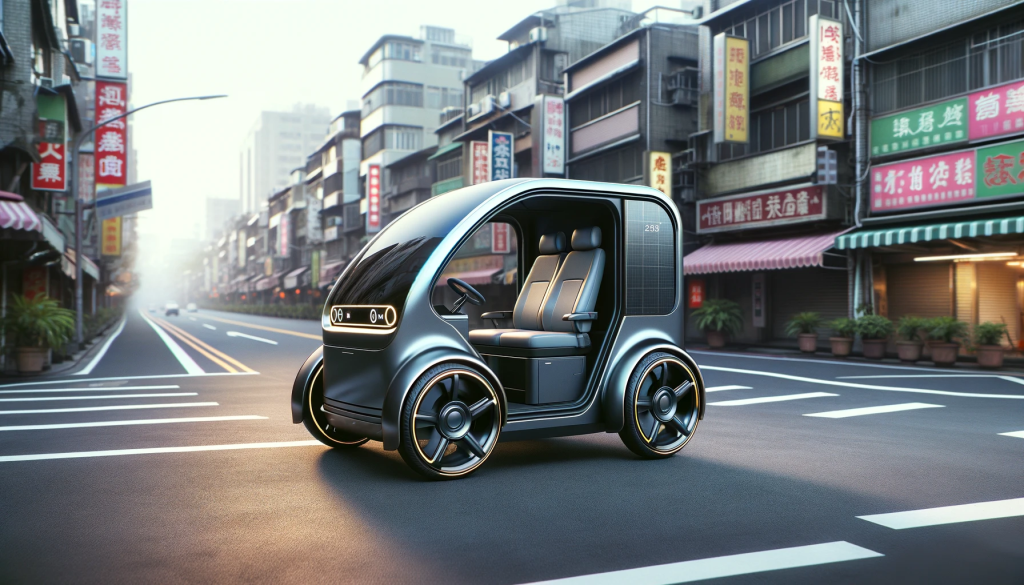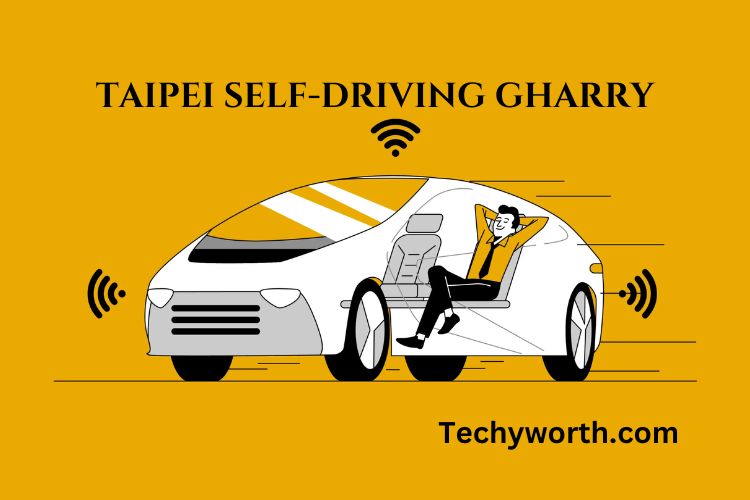Taipei, the bustling capital of Taiwan, is a city that thrives on innovation while staying true to its rich cultural heritage. One of the most exciting additions to its transportation ecosystem is the Taipei self-driving gharry. This modern marvel blends the nostalgia of traditional carriages with cutting-edge autonomous driving technology. In this article, we will explore the concept, technology, benefits, challenges, and future prospects of this unique transportation solution, making it clear why it is creating waves in urban mobility.
What is a Self-Driving Gharry?
The concept of a gharry, historically, refers to a horse-drawn carriage that was commonly used across parts of Asia. In Taipei, this classic mode of transportation has been reinvented into a self-driving, electric-powered version. The Taipei self-driving gharry retains the vintage aesthetic of the original carriages but removes the need for horses or human drivers. Instead, it relies on advanced autonomous technologies, making it a futuristic yet culturally grounded mobility option.
Passengers can now experience a ride that combines the charm of a bygone era with the convenience of modern-day technology, making it popular among locals and tourists alike.

Technology Behind the Taipei Self-Driving Gharry
The success of the Taipei self-driving gharry is made possible through the integration of several advanced technologies. Here’s a breakdown:
1. Autonomous Driving Systems
- The vehicles are equipped with LiDAR (Light Detection and Ranging), radar systems, and cameras.
- These sensors create a 360-degree map of the environment, allowing the gharry to detect obstacles, pedestrians, and other vehicles.
2. Artificial Intelligence (AI)
- AI is at the heart of the self-driving gharry, enabling it to make real-time decisions.
- It processes inputs from sensors to navigate safely and adapt to changing road conditions.
3. High-Precision GPS
- GPS systems ensure accurate location tracking and route planning.
- This technology minimizes the risk of errors in navigation, even in dense urban settings.
4. Electric Propulsion
- The self-driving gharry operates on electric power, making it environmentally friendly and efficient.
These technological components work seamlessly together to create a safe and reliable transportation experience.
Benefits of the Taipei Self-Driving Gharry
The introduction of this innovative mode of transport has brought numerous benefits to Taipei’s residents and visitors:
1. Environmental Sustainability
The gharry’s electric-powered system contributes to “reducing carbon emissions“. As Taipei continues its push toward green energy, the self-driving gharry aligns perfectly with the city’s sustainability goals.
2. Enhanced Accessibility
Self-driving gharries offer a more inclusive form of transportation. Individuals with disabilities, senior citizens, and those unable to drive now have a new way to travel comfortably.
3. Cultural and Aesthetic Appeal
By preserving the traditional appearance of the gharry, Taipei pays homage to its heritage. This unique design element sets it apart from other autonomous vehicles and enhances its appeal among tourists.
4. Reduced Traffic Congestion
With AI-based route optimization, these vehicles can avoid congested areas, contributing to smoother traffic flow across Taipei.
5. Cost-Effective Transportation
Compared to traditional taxis or ride-hailing services, self-driving gharries offer an economical alternative, making them accessible to a wider audience.

Challenges in Implementing Self-Driving Gharries
While the Taipei self-driving gharry is a promising innovation, its implementation comes with challenges:
1. Public Trust
Many people remain skeptical about the safety of autonomous vehicles. Overcoming this skepticism and building trust will require time and successful operation without incidents.
2. Regulatory Hurdles
Introducing self-driving technology into public spaces involves navigating a complex web of regulations. Ensuring compliance with traffic laws and safety standards is a significant task.
3. Infrastructure Compatibility
Taipei’s infrastructure was not initially designed with autonomous vehicles in mind. Adjustments, such as dedicated lanes or smart traffic systems, may be necessary to ensure the smooth functioning of self-driving gharries.
4. High Initial Costs
The development and deployment of self-driving gharries involve significant upfront costs. While these costs may be offset in the long term, they pose a challenge during the initial stages.
Read To Know About: Snapchat Planets: A Guide to the Friend Solar System
How the Self-Driving Gharry is Changing Tourism in Taipei
One of the most significant impacts of the Taipei self-driving gharry is in the tourism sector. The experience of riding in a vintage-style carriage powered by state-of-the-art technology is something that captivates visitors. Popular tourist routes have been designed to include iconic landmarks such as Taipei 101, the Chiang Kai-shek Memorial Hall, and Daan Forest Park.
Tourists not only enjoy the ride but also appreciate the eco-friendly and culturally immersive aspects of the self-driving gharry. This has made it a sought-after experience, earning positive reviews and generating social media buzz.
Read To Know About: IgAnony: Your Tool for Anonymous Instagram Story Viewing
Comparison of Taipei Self-Driving Gharry with Traditional Transport
To better understand the advantages of the Taipei self-driving gharry, let’s compare it to traditional forms of transportation like taxis, buses, and the classic horse-drawn gharry.
| Feature | Self-Driving Gharry | Traditional Gharry | Taxis/Buses |
|---|---|---|---|
| Energy Source | Electric-powered (eco-friendly) | Horse-powered | Fuel-based |
| Driver Requirement | Autonomous (no driver) | Requires a driver/coachman | Requires a driver/operator |
| Cultural Value | Combines modern tech with tradition | High (historical significance) | Limited |
| Environmental Impact | Zero emissions | Minimal, but animal-dependent | High carbon footprint |
| Safety Features | Equipped with sensors and AI | Relies on driver’s skill | Moderate (dependent on driver) |
| Cost to Operate | Low (electric charging) | High (maintenance of animals) | Moderate to high (fuel cost) |
| Passenger Experience | Unique and innovative | Nostalgic and scenic | Convenient but common |
This table highlights how the Taipei self-driving gharry excels in environmental sustainability, operational efficiency, and technological innovation while maintaining a connection to cultural heritage. It is a modern solution that addresses urban mobility challenges effectively.

Future Prospects for Taipei Self-Driving Gharry
The future of the Taipei self-driving gharry looks bright, with several exciting possibilities on the horizon:
1. Expansion of Services
As the technology proves successful, the service may expand to cover more neighborhoods and tourist spots. This could make the gharry an integral part of Taipei’s transportation network.
2. Enhanced Features
Future versions of the self-driving gharry could include smart features like in-ride entertainment, real-time route updates, and language translation services for tourists.
3. Integration with Smart City Initiatives
Taipei is on the path to becoming a smart city. The self-driving gharry could integrate with other smart transport solutions, such as metro systems and bike-sharing services, to create a seamless travel experience.
4. Adoption in Other Cities
The success of this innovation in Taipei could inspire other cities to adopt similar models, spreading the concept of self-driving gharries across Asia and beyond.
Why the Taipei Self-Driving Gharry Stands Out
Among various autonomous vehicle initiatives worldwide, the Taipei self-driving gharry stands out for its unique blend of tradition and technology. While many cities focus solely on modern design and functionality, Taipei has successfully preserved cultural identity in its innovation. This approach not only garners local support but also strengthens its appeal to international visitors.
Conclusion
The Taipei self-driving gharry is more than just a mode of transport; it’s a symbol of innovation, sustainability, and cultural preservation. By combining autonomous driving technology with the charm of traditional carriages, Taipei has created a unique solution that benefits both residents and visitors.
As the city continues to embrace advancements in technology, the self-driving gharry could serve as a blueprint for urban mobility that respects heritage while paving the way for the future. Whether you’re a local looking for an efficient way to travel or a tourist seeking a memorable experience, the Taipei self-driving gharry is an innovation worth experiencing.
Also Read: Rena Monrovia When You Transport Something By Car 2024
Frequently Asked Questions (FAQs)
What is a Taipei self-driving gharry?
It’s an autonomous, electric-powered vehicle designed to resemble traditional carriages, offering a unique and eco-friendly transport option.
How does the self-driving gharry operate?
It uses AI, GPS, and sensors like LiDAR and radar to navigate and adapt to traffic conditions safely.
Is the self-driving gharry safe for passengers?
Yes, it’s equipped with advanced safety features, including real-time obstacle detection and AI-driven decision-making.
What makes it different from traditional gharries?
Unlike traditional horse-drawn gharries, it’s electric-powered and autonomous, combining nostalgia with modern technology.
Where can you ride the self-driving gharry in Taipei?
Popular routes include areas near Taipei 101, the Chiang Kai-shek Memorial Hall, and other tourist landmarks.
How is the self-driving gharry eco-friendly?
It produces zero emissions due to its electric power, contributing to cleaner urban air quality.
What are the benefits for tourists?
Tourists enjoy a culturally immersive experience while exploring Taipei’s landmarks in an innovative way.
Is it more affordable than other transport options?
Yes, it’s cost-effective compared to taxis and provides a unique experience not offered by public transport.
Are there any challenges with the self-driving gharry?
Challenges include public skepticism, regulatory issues, and the need for infrastructure upgrades.
What is the future of self-driving gharries in Taipei?
They may expand to cover more routes, integrate with public transit, and serve as a model for sustainable urban mobility.
